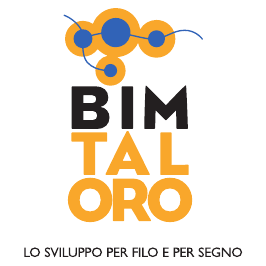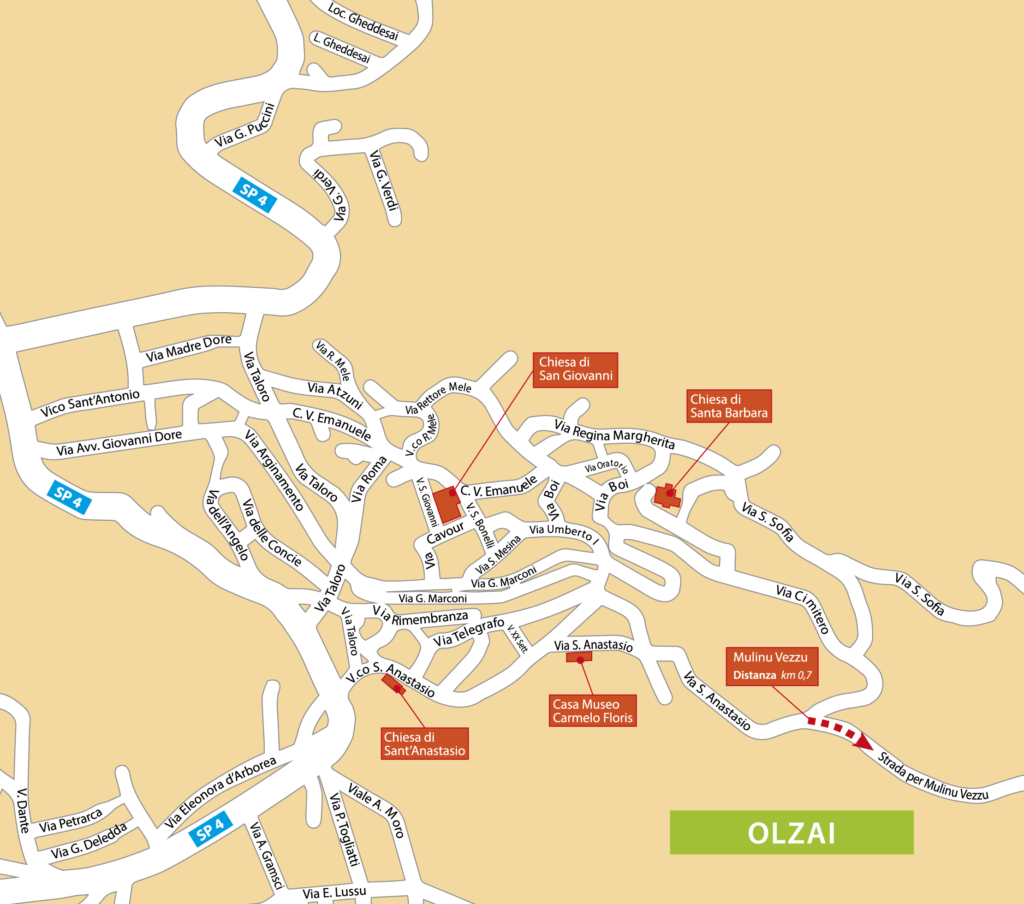The Bisine Mill
The Bisine Mill is the only milling plant still present in the territory of the seven that were still active in the village at the end of the 19th century, thanks to a flourishing production of grains grown in the surrounding countryside.
The building, owned by the Mesina Cardia family, was built in the second half of the 19th century in the higher part of the village in the hope that this location would preserve it from the winter floods of the Rio Bisine, but this did not save it from the violent flood in 1921 that destroyed most of the mills in the village. Following this event, in order to regulate the course of the stream and to restore the stagnant areas of water that favoured the spread of malaria, an embankment in rough granite was erected, an impressive work for the time.
The road that still connects the mill to the village today follows the route of a Roman road that connects Olzai to Ollolai, and which was commonly used by shepherds for the transhumance of their flocks.
In the early 2000s the Municipality of Olzai decided to acquire the area, and restored the building in order to preserve the memory of this pre-industrial activity that had characterised the economy of the village, with the aim of making it an interesting destination for visitors who are looking to discover the area.
The building, located within a dense forest of holm oaks and cork oaks, was renovated by reusing the wall structure in rough granite, and consists of two bodies placed side by side: two high walls support a large vertical wheel onto which the waters of the stream are conveyed by an upstream channel; to the side there is a small room with the wooden gears and the large milling stone which, thanks to the driving force of the water, was used to grind grain into flour.
The room that houses the mechanism is paved in stone and has a small corner fireplace and two small windows, in addition to the entrance door.
In 2005 the entire structure was consumed by a fire which led to the renewal of the entire grinding plant both in its wooden part and the milling stone, which was also irremediably damaged.
The structure can be visited during the Cortes Apertas event and, on request, by contacting the cooperative that manages the structure on behalf of the Municipality.
Text by Laura Melis with the contribution of Lidia Siotto
 BIM TALORO
BIM TALORO 